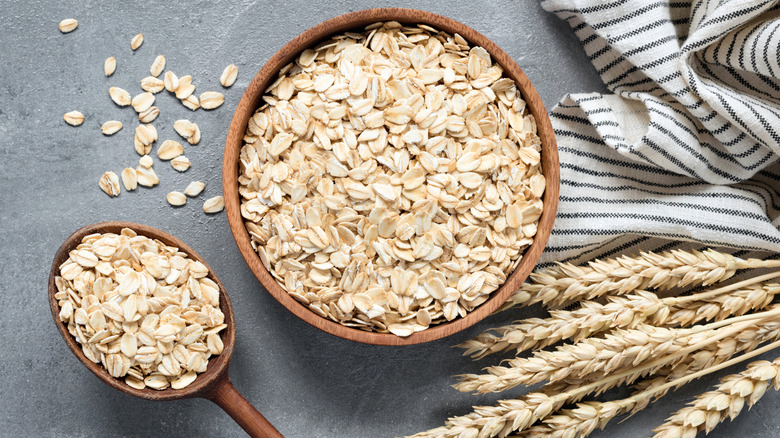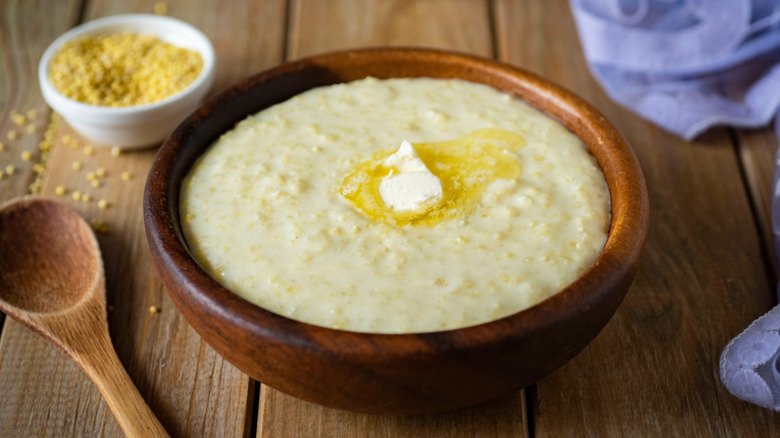What's The Difference Between Oatmeal And Porridge?
I don't know about you, but when I hear the word "porridge", I think about the cozy little bowls of food you'd find in a fairy tale like Goldilocks and the Three Bears, or breakfast from the 1800s in some tiny European town. Which is funny, considering the ever-popular overnight oats are basically just a type of porridge, and oatmeal–no matter what fancy ingredients you upgrade it with–also falls under the porridge umbrella. Really, when you break things down, is there a difference between oatmeal and porridge anyway?
Well, yeah, there is. The number one difference is right in the name, actually. Whether you prefer adding eggs for a more savory oatmeal or like yours crammed full of fruits or sugary syrups, oatmeal is always made from oats. Porridge, on the other hand, can be made out of any legume, cereal or whole grain. Ergo, oatmeal is actually a type of porridge! So is congee, one of my favorite breakfast foods made from rice with tasty add-ins like ginger, scallions and chicken.
Both oatmeal and porridge can come in savory or sweet forms and are typically eaten hot, but you can also make them cold ala overnight oats. The point's just to cook the grain so it's nice and soft, and then serve it however you'd like.
The best way to cook porridge or oatmeal
Another big difference between oatmeal and porridge comes from the cooking time. Since porridge can be made from virtually any grain, the cook time differs pretty drastically from type to type. The cornmeal-based porridge known as polenta, for example, can take 50 to 60 minutes to cook if you're doing it the traditional way and not using instant polenta. Congee, on the other hand, takes about 35 to 40 minutes. Most oatmeal you get these days comes in an instant form that cooks within minutes, but if you're cooking a batch from scratch, expect to take up to 30 minutes to fully cook your oats.
Most porridges and oatmeal can be made in a pot on the stove by simmering the grains on medium heat. Lower temperatures and longer cook times will get you a softer grain and more homogenous final dish, while cooking it at higher temperatures for less time leaves a little bite and shape to your grains. You can also cook some porridges in your rice cooker (and some even come with a congee setting!).
When you're using instant grains, you can just use the microwave or water from a kettle or hot water heater. It just depends on how much time you have. Choosing between oatmeal and porridge, on the other hand, depends on whether you're feeling oats or a different type of grain. Both are equally tasty and customizable, so either is a big breakfast win.

